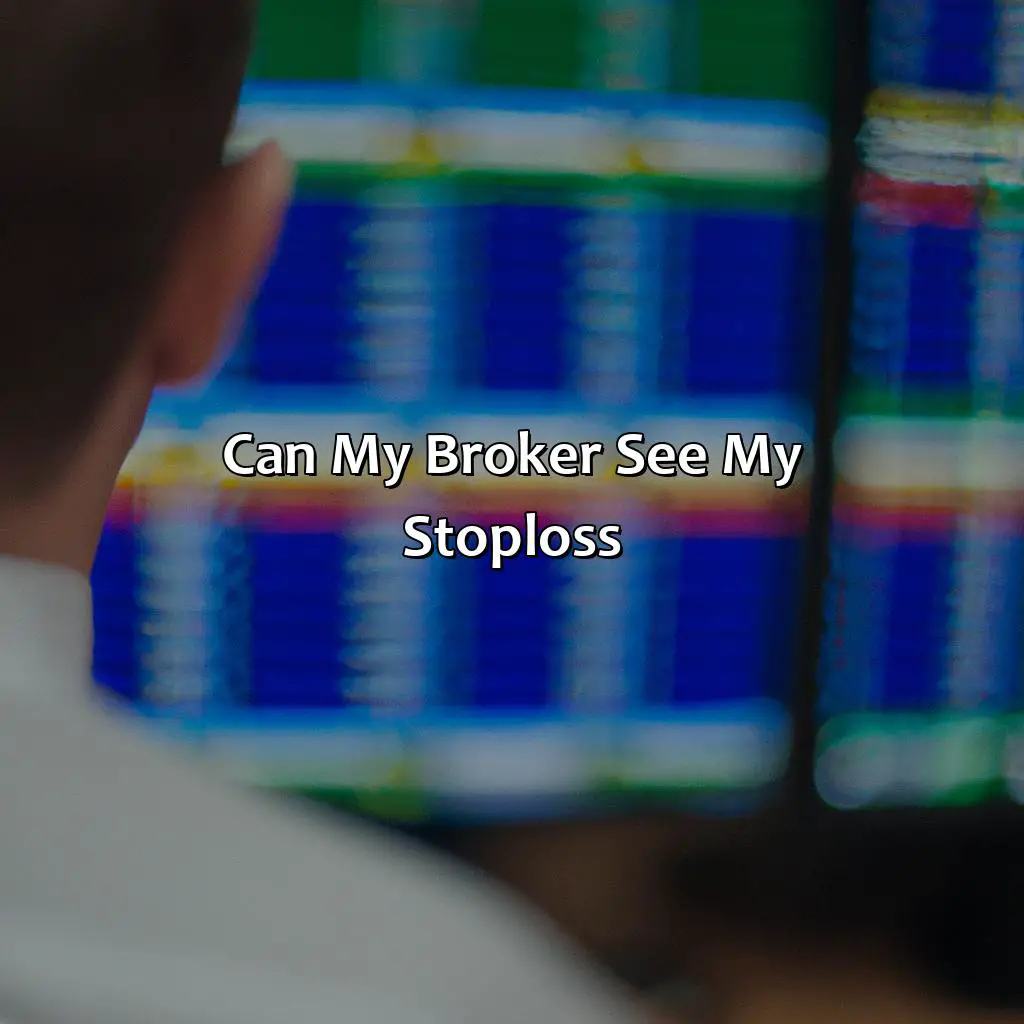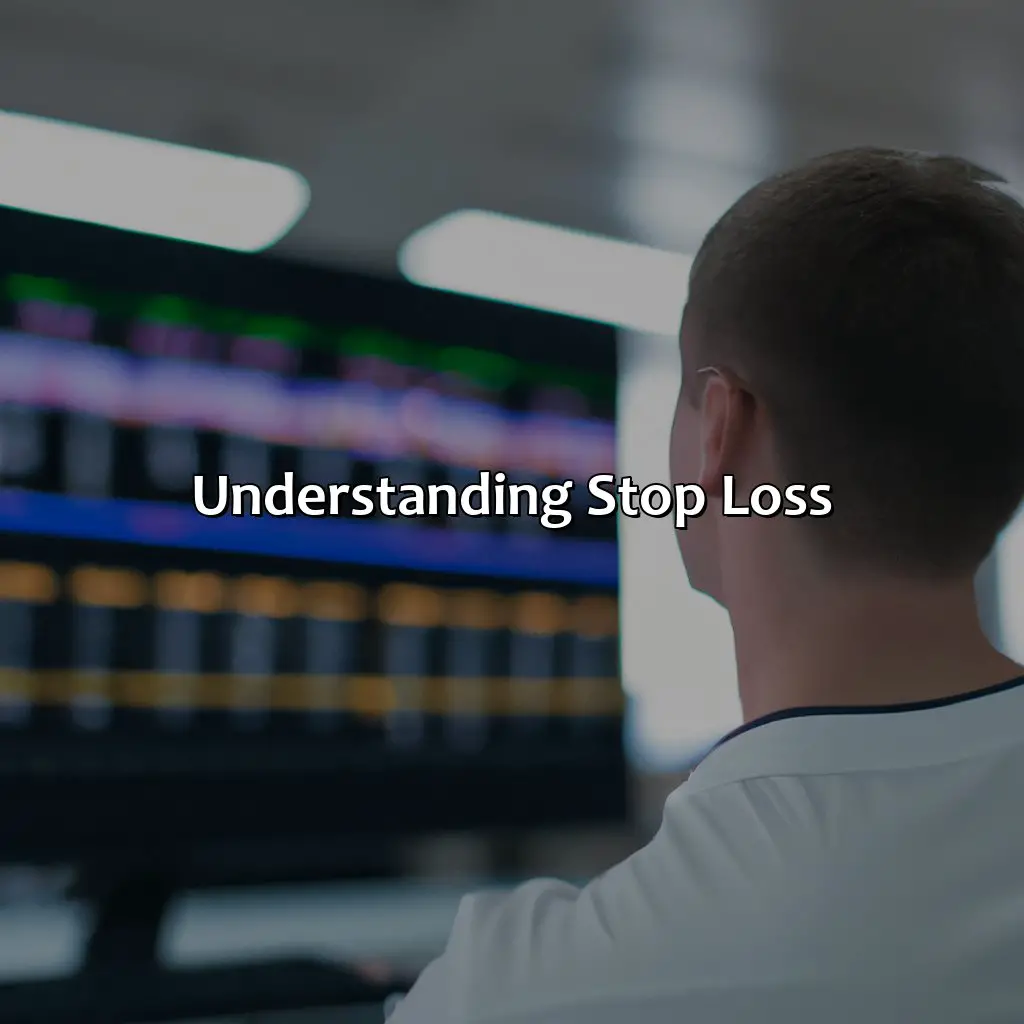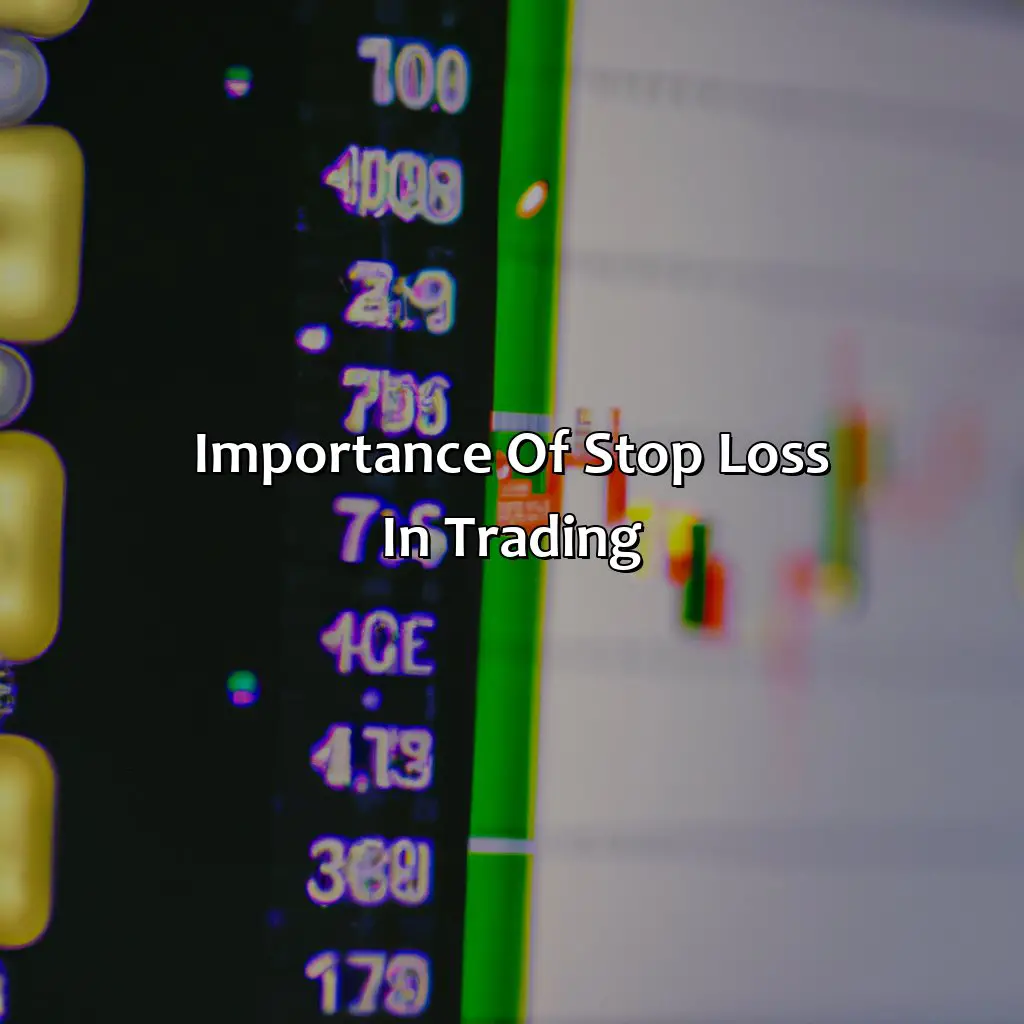
Key Takeaway:
- Stop-loss orders are an essential part of trading that can protect your investments from significant losses in volatile markets. Brokers have access to stop-loss data and execution, but they must comply with regulations regarding investor confidentiality.
- When using a stop-loss order, be mindful of the limitations of your broker’s execution, as market conditions can affect the execution price, particularly during times of high volatility.
- Protecting your stop-loss order can be achieved through the use of multiple stop losses, careful placement away from obvious market levels, and increased vigilance in volatile markets. A comprehensive trading system and investment strategy can help minimize risks and maximize profits.
Understanding Stop Loss

Photo Credits: forexbrokerreport.com by Jonathan Rodriguez
Stop-loss is a vital tool that enables traders and investors to manage risk effectively in the trading world. It is an order placed with a broker to sell a security when it reaches a specific price. Traders use it to reduce losses on a trade. However, the question arises, can the broker see the stop-loss?
Brokers can see stop-loss orders placed with them because they need to execute the orders. However, it is essential to choose a broker with a standard privacy policy to protect an investor’s information. It is crucial to read the terms of the agreement with the broker thoroughly before proceeding. Furthermore, investors can use multiple brokers to place stop-loss orders to minimize the exposure of the stop-loss order to a single broker, minimizing the chances of front-running.
One of the essential aspects of utilizing stop-loss is to ensure that the stop-loss price is not too close to the market price. If the stop-loss price is too close to the trading price, it may trigger the stop-loss order even if the stock is experiencing a minor fluctuation. Moreover, traders should avoid using stop-loss orders during highly volatile times as the price may get triggered. In such cases, traders should use other risk management strategies to mitigate exposure to risk.
Lastly, a true story that emphasizes the importance of stop-loss is the sudden crash of the cryptocurrency market in 2018. Investors who had placed stop-loss orders in the market managed to save their portfolio from significant losses as the market crashed. The stop-loss order allowed them to exit the market at a predetermined price and manage risk effectively.
Importance of Stop Loss in Trading

Photo Credits: forexbrokerreport.com by Ryan Allen
Stop-loss is a crucial tool that provides financial security to traders amidst market volatility. It is imperative for traders to understand the importance of setting stop-loss orders and its implications on their trading strategy. Incorporating stop-loss helps traders mitigate potential losses by automatically executing a market order once their predetermined price point is reached. This provides traders with an added layer of protection, reducing the impact of market fluctuations on their portfolio.
It is important to note that stop-loss orders are connected to the trader’s order book. Although brokers have access to the order book, they cannot see the specific stop-loss order set by a trader. This is because the order book’s visibility is limited to the broker’s platform. The broker can only view stop-loss orders if they are placed as an additional feature that allows broker access. However, brokers are obligated to execute stop-loss orders once they are triggered, regardless of their personal preferences or opinions.
As per a survey conducted by the FXCM group, over 85% of traders believed that stop-loss orders were critical to their trading strategy. This highlights the importance of stop-loss orders in the financial industry, and their role in safeguarding trader’s interests.
Stop Loss and Broker’s Role

Photo Credits: forexbrokerreport.com by Elijah Anderson
Your broker must understand their role when you set up a stop-loss. They get access to your trading platform and your private details. Unfortunately, market conditions in the stock market can limit how well they can execute the stop-loss.
How Broker Executes Stop Loss
Execution of Stop Loss by Brokers
Brokers are responsible for implementing stop loss orders on the trading platform based on the investor’s requirements. They act as intermediaries between investors and the market, and it is their duty to place trades according to an investor’s instructions. Execution of stop loss orders is one such instruction that brokers need to follow diligently.
When a trade hits a specific price level entered in the stop loss order, the broker system will automatically initiate the trade execution process. The trigger can be reached either through a market or limit order, depending on what option was selected while placing an order. Additionally, investors have an option to input restrictions in addition to stop-loss levels such as maximum slippage or liquidity constraints which would be followed by brokers while executing trades.
Investor confidentiality must be maintained at all times by brokers executing stop-loss orders. When it comes to trading, confidentiality is crucial because if others have access to someone’s trading plans, they can manipulate markets policies and move prices accordingly. Thus, every reputable broker will have strict procedures in place with regards to client information and data protection.
Pro Tip: Before choosing your broker for trading purposes, thoroughly research their confidentiality policy and read online reviews from other traders about their experience with executing stop-loss orders on their platforms. Be prepared for the harsh reality: your stop loss is not immune to the unpredictable market conditions, even with the help of your broker.
Limitations of Broker’s Stop Loss Execution
While brokers provide stop-loss functionality to traders on their trading platforms, there are limitations to the execution of stop-loss orders. Traders need to understand these constraints to use stop-loss effectively. The broker’s infrastructure and systems can sometimes experience technical difficulties, resulting in delayed or missed executions of stop-loss orders.
Another limitation is market conditions – during times of high volatility and significant price movements, stop-loss orders can be executed at prices that differ significantly from the originally set level. This slippage can occur due to a lack of liquidity in the market or rapid changes in stock prices.
To protect against these limitations, traders should be aware of strategies such as:
- Using multiple stop losses at various levels: this increases their chances of an order being executed at the desired price level.
- Placing stops away from obvious levels: this reduces the risk of trigger-happy algorithmic traders executing stop losses clustered around popular price points.
- Being careful with volatile markets
Finally, when market conditions become extremely tumultuous, traders may want to monitor positions manually or rely on limit orders instead of traditional stop losses. Limit orders allow capital preservation by providing protection against a downside movement while also allowing for flexibility during strong upswings.
Overall, while brokers’ infrastructure limitations and market volatility pose certain risks to the effectiveness of stop-loss orders, understanding what these hindrances are and how best to navigate them can improve a trader’s bottom line.
Don’t put all your stop-loss eggs in one trading system basket – mix it up for a more secure investment strategy.
How to Protect Your Stop Loss

Photo Credits: forexbrokerreport.com by Terry Jones
For optimal trading performance, implement technical analysis and have a solid trading system and investment strategy in place. Use multiple stop losses to assess risks, market trends and trading rules. Place stop losses away from obvious levels, considering market analysis, investment goals and trading psychology. When trading in volatile markets, be aware of market participants, algorithmic trading and effective trade management.
Using Multiple Stop Losses
Using Multiple Stop Levels:
One way to minimize the risk of overexposing your trading account is by using multiple stop-losses. This strategy allows traders to place several limit orders at different price levels, setting different risk parameters, and ensuring an adequate level of protection against rapid market movements.
Here is a 3-Step Guide on How to Use Multiple Stop Losses:
- Identify the entry point for a trade
- Determine the amount of risk exposure that you are willing to tolerate
- Place several stop-loss orders at different price levels
To further mitigate potential risks associated with market trends and unexpected fluctuations, it’s also essential to consider using trade placement techniques, such as scaling-in and scaling-out, and adhering to strict trading rules.
Protecting your stop-loss order can involve several measures:
- Placing stops away from obvious levels where other traders might also be positioning theirs.
- Using trailing stops instead or in addition to fixed-stop loss orders.
- Providing brokers with clear instructions on how you want your stops executed.
Placing your stop loss away from obvious levels can protect your trading performance, align with your investment goals, and show off your impressive market analysis skills.
Placing Stop Loss Away from Obvious Levels
Avoiding Obvious Levels to Place Stop-loss Orders
To ensure better trading performance, placing stop-loss orders away from obvious levels can play a crucial role. The market analysis can give insights into the levels where other traders place their stop-loss orders, which may create clusters of orders at those levels. These areas are also visible on charts, making them easier to spot. By avoiding such obvious levels, a trader can protect his investment goals from possible market volatility.
This strategy can help trade with better trading psychology by reducing the emotional impact of being stopped out frequently at the same level. It also helps avoid the fear of missing out on potential profits when the price rebounds after hitting an unexpected support or resistance level. A trader must be extra careful while placing stop-losses since they are one of the essential tools in risk management and play an integral part in any successful trading strategy.
By following these strategies using stop losses and choosing a suitable broker for executing them effectively according to individual trader needs, investors can gain more significant benefits in long-term trading goals. Understanding how a broker executes stop losses is just as important as learning where to place them so that traders can avoid limitations such as requotes and slippages for better order execution.
With volatile markets, it’s important to remember that your stop-loss is like a seatbelt – it may not prevent the crash, but it can help minimize the damage.
Being Careful with Volatile Markets
Concerns When Trading in a Highly Volatile Market
Trading is a challenging task, and those who do it know that sometimes the market can fluctuate widely within a short time. The issue becomes more complicated when trading in volatile markets like Forex, where prices can rapidly experience high levels of unpredictability. Such hectic situations demand traders to be incredibly cautious, mindful and smart with how they set their stop-loss orders.
While developing a stop-loss strategy for highly volatile markets, traders must understand its peculiarities. For instance, given that the market participants might make sudden decisions based on news or any other catalysts; businesses need to use additional protection. This situation calls for more refined algorithms in trade management that make calculations based on multiple factors.
Another aspect to consider when setting stop-losses in volatile markets is the timing of execution. Algorithmic trading has become increasingly common in financial markets, and brokers differ concerning how they perform their activity. Therefore traders have to examine different brokerage houses before deciding which one’s algorithm suits them best.
Finally, traders often face a run into losses due to technological limitations like internet connectivity issues leading them to miss critical trading signals. To maintain control over potential problems of this kind, it’s necessary to establish a fail-safe mechanism of stop-loss backup during every transaction.
There have been cases when brokers intentionally work against their clients in executing the stop-loss order by manipulating prices at crucial moments. Some have previously claimed that brokers are known for adjusting executions or even manipulate order books so they can benefit from clients’ positions. However, such insights are anecdotal at best as competition among brokerage firms increases day by day leading to an increase in fair-trade practices and adherence to regulatory norms by industry participants.
Some Facts About Can My Broker See My Stop-Loss:
- ✅ Your broker is able to see your stop-loss orders. (Source: Investopedia)
- ✅ Brokers may use stop-loss orders to manipulate stock prices. (Source: Forbes)
- ✅ Some brokers may use your stop-loss orders as a way to assess the market sentiment and act accordingly. (Source: Wall Street Survivor)
- ✅ To reduce the risk of your stop-loss orders being used against you, consider using limit orders or trailing stops instead. (Source: The Balance)
- ✅ It is important to have a clear understanding of the broker’s policies and procedures regarding stop-loss orders before placing them. (Source: NerdWallet)
FAQs about Can My Broker See My Stop-Loss?
Can my broker see my stop-loss?
Yes, your broker can see your stop-loss. However, this doesn’t necessarily mean that they will engage in stop-hunting or intentionally trigger your stop-loss. It’s important to choose a reputable and regulated broker to minimize the risk of such practices.


